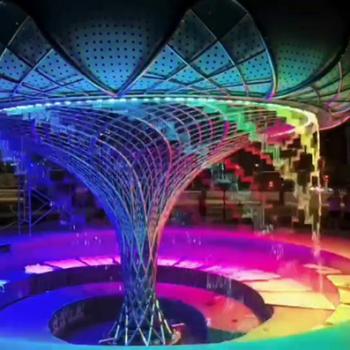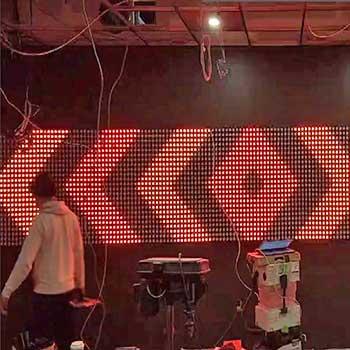LED Media Mesh is the Future of DOOH
The world of digital out-of-home (DOOH) advertising is constantly evolving, and with advances in technology, the possibilities for creative and innovative advertising are endless. One of the most exciting developments in the industry is the Media Facade – a type of outdoor display that transforms entire buildings into dynamic, interactive canvases for advertising and art.
A Media Facade is essentially an LED screen that is integrated into a building's facade or exterior, allowing for large-scale and high-resolution visual displays. These displays can be used for advertising, branding, information, and entertainment, and can create a unique and immersive experience for viewers.
The Media Facade is a relatively new concept, but it is gaining popularity quickly, with many buildings around the world being transformed into massive digital displays. In fact, experts predict that the media facade market will grow at a compound annual growth rate of over 20% between 2021 and 2028.
The potential for media facades is enormous, and the future of DOOH advertising is likely to be heavily influenced by this technology. Here are a few ways in which media facades could shape the future of DOOH:
-
Increased interactivity: Media facades allow for a high level of interactivity between viewers and the content on display. With the use of sensors, cameras, and other technologies, viewers can interact with the display in real-time, creating a truly immersive experience.
-
Personalized content: With the use of data and analytics, media facades can deliver personalized content to viewers based on their location, interests, and other factors. This allows for a more targeted and effective advertising experience.
-
Integration with mobile devices: As more people use their mobile devices to consume media, media facades could be designed to interact with these devices, creating a seamless and integrated experience for viewers.
-
Greater flexibility: Unlike traditional billboards or signs, media facades are highly flexible and can be updated and changed easily. This allows for more timely and relevant advertising content, as well as the ability to respond quickly to changing market conditions.
-
Integration with other technologies: Media facades can be integrated with other technologies such as augmented reality, virtual reality, and artificial intelligence, creating even more immersive and interactive experiences for viewers.
Of course, there are also challenges to be addressed with media facades, such as the impact on energy consumption and the need for careful planning and design to ensure the display is in harmony with the building's architecture. However, with careful consideration and planning, media facades can be a powerful tool for DOOH advertising.
In conclusion, the future of DOOH and the media facade is bright and exciting. As technology continues to advance, we can expect to see even more innovative and creative uses of media facades for advertising, art, and entertainment. With the ability to create truly immersive and interactive experiences, media facades have the potential to transform the way we think about outdoor advertising and the way we interact with our built environment.




